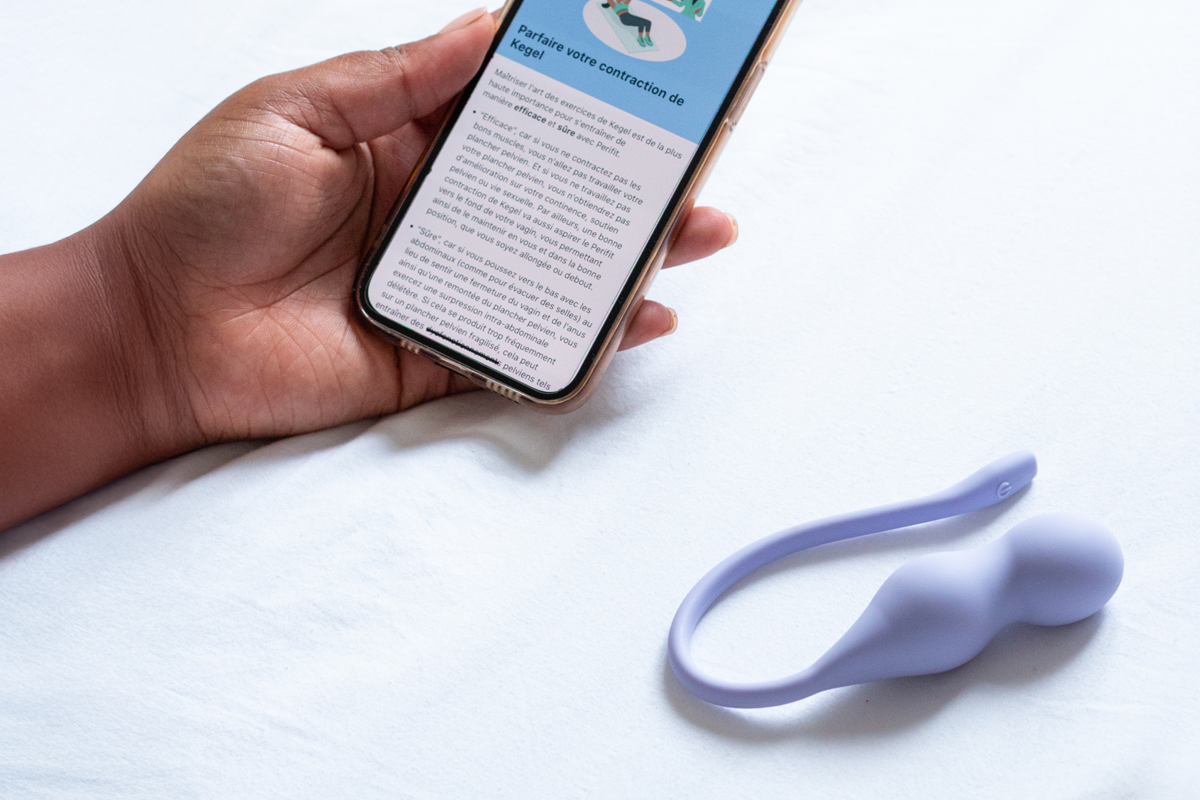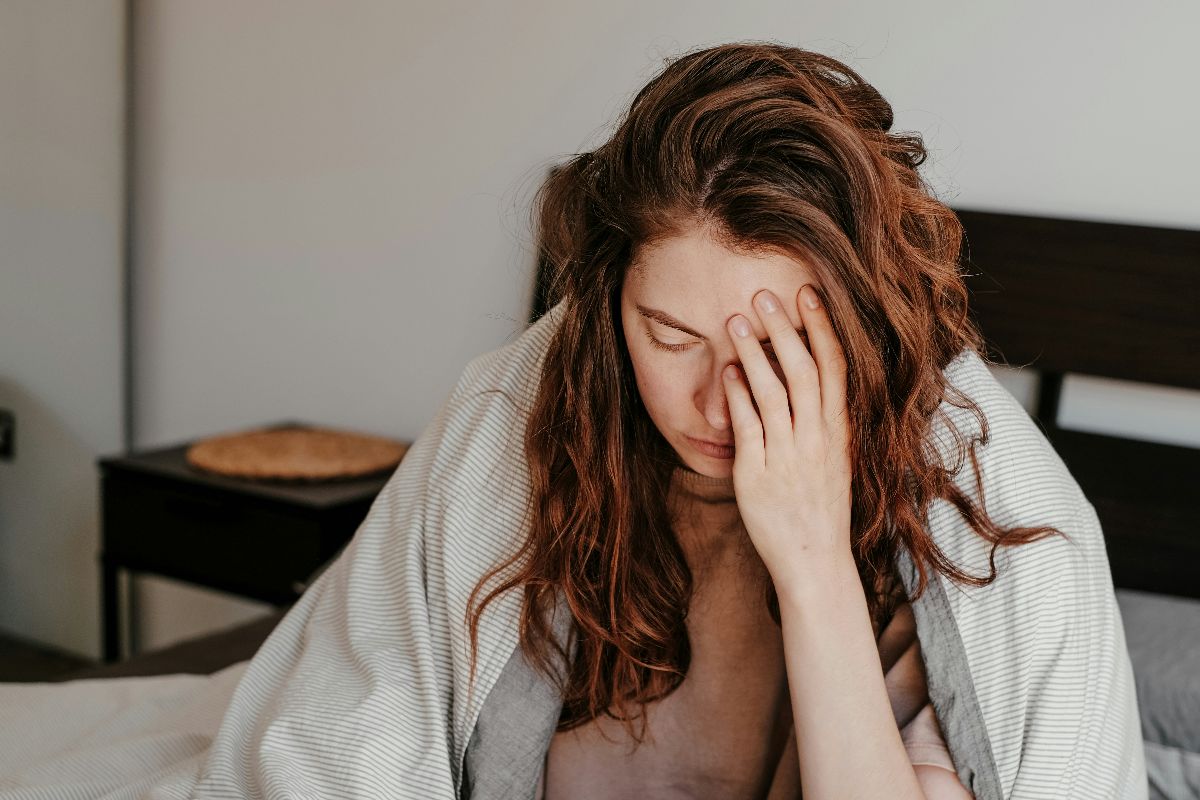Ever felt like your pelvis is waging war against you during that time of the month? Pelvic floor pain during menstruation is more common than you might think, affecting 20% of women. In fact, 50% of women have menstrual pain 1-2 days a month with 1 out of 5 women limiting activity and even missing work or school due to pain, lethargy, depression, and inability to concentrate. But don't worry – we've got your back (and your front). In this article, we'll dive into the causes, symptoms, and relief strategies for period pelvic pain. Whether you're dealing with occasional discomfort or chronic issues, we'll explore ways to ease the pressure and get you feeling more like yourself.
Symptoms of pelvic floor pain related to your menstrual cycle
Experiencing pelvic floor pressure during periods is more common than many realize. The menstrual cycle can trigger various uncomfortable sensations in the pelvic region, ranging from dull aches to sharp cramps.
Common symptoms:
- Throbbing or cramping pain in the lower abdomen
- Dull, continuous ache that may radiate to the lower back and thighs
- Increased pelvic pressure or heaviness
- Discomfort during urination or bowel movements
These symptoms (1) typically start 1-3 days before menstruation and peak within 24 hours of onset. For some, the discomfort can be severe enough to disrupt daily activities.
Causes of pelvic floor pain during period
Hormonal fluctuations
During menstruation, hormonal changes can trigger pelvic floor muscle tension, leading to discomfort and pain. Estrogen levels drop, which may cause the pelvic floor muscles to contract more intensely. This heightened muscle activity can result in cramping and pelvic floor pressure when menstruating.
Uterine contractions
As the uterus sheds its lining, it contracts to expel menstrual blood. These contractions can cause pain that radiates to the pelvic floor muscles. Some individuals may experience more intense contractions, leading to severe pelvic floor pain during menstruation.
Underlying conditions
Certain health issues can exacerbate pelvic floor pain during periods. Endometriosis, where uterine-like tissue grows outside the uterus, can cause significant pelvic pain that worsens during menstruation. Other conditions like adenomyosis or uterine fibroids may also contribute to increased pelvic discomfort during your cycle.
Please keep in mind that although some women have come to accept pelvic floor discomfort as "a part of being a woman", if pain is severe or long lasting this warrants seeing a medical professional for further testing.
Does diet affect pelvic floor pain during menstruation?
Your diet can indeed influence pelvic floor pain during menstruation. Studies have shown (2) that certain dietary choices may help alleviate menstrual discomfort, including pelvic floor pressure during periods.
💡 A diet rich in anti-inflammatory foods like fruits, vegetables, and whole grains has been associated with reduced menstrual pain intensity.
Research suggests (3) that omega-3 fatty acids, found in fish oils, can decrease inflammatory prostaglandins and potentially reduce pelvic floor pain during menstruation. Conversely, a high intake of processed foods and refined sugars may exacerbate symptoms. Adequate hydration and fiber intake are also crucial for managing menstrual discomfort.
While diet can play a role in symptom management, it's important to remember that everyone is unique. Some people find relief through dietary changes, while others may need additional interventions.
Can a weak pelvic floor cause heavy periods?
A weak pelvic floor can indeed contribute to heavy periods. The pelvic floor muscles help support the uterus and vagina. When these muscles are weak, the uterus may not be held as firmly in place. This allows the uterus to tilt backward, a condition known as retroverted or retroflexed uterus. A tilted uterus can put pressure on the veins that drain the uterus, impeding proper blood flow and potentially causing heavier menstrual bleeding.
Additionally, weak pelvic floor muscles may not contract efficiently during menstruation to help expel menstrual blood. This can also result in longer and heavier periods. Strengthening the pelvic floor muscles through kegel exercises may help improve uterine support and reduce menstrual blood loss in individuals with weak pelvic floor muscles.
What is the difference between menstrual cramps and pelvic pain?
Menstrual cramps and pelvic pain are often confused, but they're distinct experiences. Menstrual cramps, or dysmenorrhea, are specific to your period. They're caused by uterine contractions and typically felt as throbbing or cramping in the lower abdomen. These cramps usually start 1-3 days before your period and peak within 24 hours.
Pelvic pain, on the other hand, is a broader term. It can occur at any time and may be caused by various conditions affecting the reproductive organs, digestive system, or urinary tract. Chronic pelvic pain lasts at least 6 months and can be quite severe.
While menstrual cramps are usually manageable with over-the-counter pain relievers or heat therapy, persistent pelvic floor pain during menstruation might indicate an underlying condition like endometriosis or fibroids. If you experience severe or prolonged pelvic floor pressure during your period, it's important to consult a healthcare provider for proper diagnosis and treatment.
How to relieve your pelvic pain during your period?
Try heat and gentle movement
Applying heat to your lower abdomen can help relax tense muscles and ease pelvic floor pain during menstruation. Use a heating pad or take a warm bath for 15-20 minutes at a time. Light exercise like stretching or walking can also increase blood flow and release pain-relieving endorphins.
Explore medication and relaxation techniques
Over-the-counter pain relievers like ibuprofen can reduce inflammation and cramps. For longer-term relief, hormonal birth control may help (4) regulate menstrual symptoms. Relaxation practices such as deep breathing (Diaphragmatic Breathing), meditation, or gentle yoga may also ease tension in your pelvic area.
Consider pelvic floor exercises
Strengthening your pelvic floor muscles through Kegel exercises may provide relief from pelvic floor pressure during your period. There's no medical reason to avoid pelvic floor exercises while menstruating.
Devices like Perifit Care+ can guide you through proper technique. You can safely use Perifit Care+ during your menstrual cycle.
💡 For those who do continue to use their Perifit Care+ throughout their period - it's worth noting that throughout your cycle, your scores may vary. It's nothing to worry about, though, as this is just a natural fluctuation in your strength as part of your monthly cycle.
Remember to maintain proper hygiene when using Perifit Care+ during your period. Clean the device thoroughly before and after each use to prevent any risk of infection.
When to see a doctor for pelvic floor pain during menstruation?
While some discomfort during periods is common, severe or persistent pelvic floor pain during menstruation may warrant medical attention. If your pain interferes with daily activities or lasts longer than the first 1-2 days of your cycle, it's time to consult a healthcare provider.
Severe Symptoms
Seek immediate care if you experience sharp, sudden pelvic pain accompanied by heavy bleeding, fever, or fainting. These could indicate serious conditions requiring urgent attention.
Persistent Issues
If you have recurring pelvic floor pressure during periods that does not improve with over-the-counter pain relievers, it's crucial to see a medical professional. Chronic pelvic pain may be an underlying conditions like endometriosis or fibroids.
If pelvic pain is severe, internal manual therapy by a pelvic specialist or using a pelvic wand to address muscle spasms is highly effective to reduce pain and muscle spasm.
So, there you have it - the lowdown on pelvic floor pressure during your period. Remember, you're not alone in this struggle. Whether it's hormones gone wild or muscles throwing a tantrum, period pain can really cramp your style. But don't let it rule your life! From heat packs to pelvic floor exercises, there are tons of ways to find relief. And hey, if you're curious about Perifit, give it a shot - many folks use it during their period without issues. The most important thing? Listen to your body and do what feels right for you. With the right tools and knowledge, you can take control of your pelvic health and show those period pains who's boss!
Sources :
- https://www.mayoclinic.org/diseases-conditions/menstrual-cramps/symptoms-causes/syc-20374938
- https://pmc.ncbi.nlm.nih.gov/articles/PMC6290229/
- https://pmc.ncbi.nlm.nih.gov/articles/PMC8065992/
- https://www.yalemedicine.org/conditions/chronic-pelvic-pain





